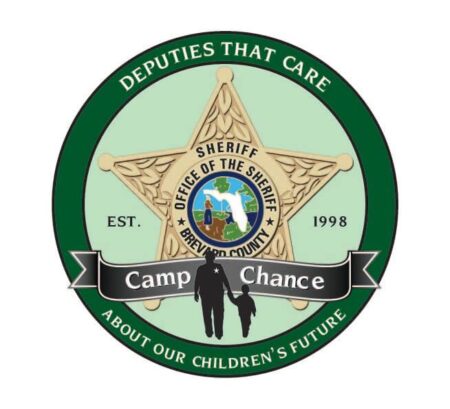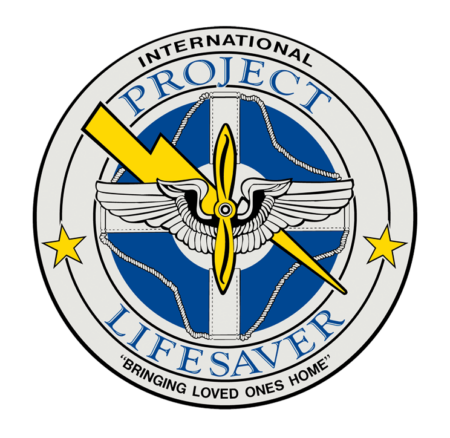Home » Units & Services » Community Services
The Brevard County Sheriff’s Office Community Services Unit partners with our community to provide programs to our local business owners and citizens to educate them on crime prevention, personal safety, provide security surveys for their homes and businesses, and so much more!
This unit also focuses on our younger citizens and provides education through programs such as the Teen Driver Challenge, as well as preparation for potential future careers in law enforcement through the Explorers Program.
The Community Services Unit also offers vital programs to our community members with special needs, diminished mental capacity and other at-risk individuals through our CHANCE Communication Card and Project Lifesaver.
If you or your organization would like a presentation by our Community Services Unit or want more information on any other these programs, please email us using the contact form below, and a member of our team will be in touch.
Click here to schedule this presentation or call our Crime Prevention Team at 321-264-7755
Although 1 in 5 students REPORT being bullied, the actual number of bullying incidents can be far greater. The effects of bullying do not only impact victims, but bystanders and bullies as well. These effects can be even more devastating when performed online where the abuse can be vast and far reaching. If you, or someone you know, has seen or been the victim of bullying, whether in person or online, please contact your local law enforcement agency.
Click here to schedule an Anti-Bullying Presentation or call our Crime Prevention Team at 321-264-7755.
 Brevard Attitude Modification is a program designed to address youth who have behavior and attitude issues at home and school. Offered to both male and females ages 13-17, this program is designed to show participants what the consequences of bad decisions can be. They will also receive instruction on life skills required for professional success and be given the opportunity to connect with local career centers and mentors. BAM consists of jail tour, medical examiner’s office tour, life skills and career goal presentation.
Brevard Attitude Modification is a program designed to address youth who have behavior and attitude issues at home and school. Offered to both male and females ages 13-17, this program is designed to show participants what the consequences of bad decisions can be. They will also receive instruction on life skills required for professional success and be given the opportunity to connect with local career centers and mentors. BAM consists of jail tour, medical examiner’s office tour, life skills and career goal presentation.
Click here to apply or call our Crime Prevention Team at 321-264-7755
 Camp Chance ® is located at Jakes Lake in Cocoa, and is available to any local non-profit organization for a day, night, or weekend, camping trip. Organizations have access to our kitchen, classroom, and restrooms. Upon request, canoes are also available for use on the lake. We can provide a tour of the camp for First time users after Application and Insurance certificate are received. Interested non-profit organization must make reservations, submit an application, provide proof of insurance, and complete adult and minor waivers, if necessary.
Camp Chance ® is located at Jakes Lake in Cocoa, and is available to any local non-profit organization for a day, night, or weekend, camping trip. Organizations have access to our kitchen, classroom, and restrooms. Upon request, canoes are also available for use on the lake. We can provide a tour of the camp for First time users after Application and Insurance certificate are received. Interested non-profit organization must make reservations, submit an application, provide proof of insurance, and complete adult and minor waivers, if necessary.
Click Here to Apply or Call our Crime Prevention Team for more information 321-264-7755
The C.H.A.N.C.E. (Citizen Has a Noticeable Crisis Episode) is an initiative of the Brevard County Sheriff’s Office. Its purpose is to provide our citizens with a card to carry on their person that can be given to law enforcement during an encounter, as well as compile and maintain a list of individuals who have “special needs” due to mental or neurological disabilities and who may reside or frequently visit Brevard County. Residents are invited to proactively provide information about a loved one with special needs of any age, who may require special assistance in an emergency or interaction with Deputies.
The program is completely voluntary. Click Here to Apply
Online dating and parking lot exchanges of items bought over the internet, have fast become a norm for many in our community and across the country. Our “Checkmate” program, in partnership with the Brevard County Clerk of Courts, is a Free tool useful for finding publicly available court record information and can help you learn a little more about the person you are about to go on a date with, or meet to complete an online purchase. Also see our “Exchange Zone” program.
The Brevard County Sheriff’s Office Citizens Academy is a seven-week (eight session) program designed to give our citizens an inside look at the various aspects of the Brevard County Sheriff’s Office. This is a chance for our citizens to get a behind-the-scenes look at what the 1,700 proud men and women of the Sheriff’s Office do on a daily basis. Participants will experience an orientation similar to that of newly hired deputies, during which they will receive classroom style instruction from BCSO trainers. Attendees will also have the opportunity to tour many of our BCSO facilities to include our jail complex, crime scene lab, aviation hangar, and many more. Additionally, you will be given an opportunity to ride along with a Deputy for a few hours of a shift.
Citizens Academy is open to all residents of Brevard County who are at least 18 years old. We hope the experience will be informative, fun, and exciting!
Click here to apply or contact our Crime Prevention Team at 321-264-7755
 Coffee with a Cop is a program designed to bring community members together with law enforcement, in a relaxed group setting, discussing areas of concern within Brevard County. Our Crime Prevention Unit will come to your organization and provide fresh coffee, joining your group in a casual and comfortable atmosphere. We can engage with you on topics of relevance, such as Frauds and Scams, Workplace Violence, Human Trafficking, Personal Safety, and the Four A’s of Survival.
Coffee with a Cop is a program designed to bring community members together with law enforcement, in a relaxed group setting, discussing areas of concern within Brevard County. Our Crime Prevention Unit will come to your organization and provide fresh coffee, joining your group in a casual and comfortable atmosphere. We can engage with you on topics of relevance, such as Frauds and Scams, Workplace Violence, Human Trafficking, Personal Safety, and the Four A’s of Survival.
If you would like to enjoy a cup of our very own “Back The Brew” from the comfort of your home, please visit our amazing partners at Juniper Mountain Coffee by visiting the links below to place an order! 10% of the proceeds from this bag go directly to the Brevard County Sheriff’s Office Charity to strengthen and support law enforcement and first responders in Brevard County!
Click here to schedule this presentation contact our Crime Prevention Team at 321-264-7755
Drugs are chemicals that can affect the body in different ways. Some drugs can change a person’s body and brain in ways that last long after the person has stopped using drugs, and can even cause irreversible damage. Sharing information about substance abuse as well as establishing a positive role model for children are both important parts of drug abuse prevention.
Click here to schedule this presentation contact our Crime Prevention Team at 321-264-7755.
To better serve the citizens of Brevard County, our agency has partnered with CEO Dave Eddins and his team at Alarm Specialists to provide a camera-monitored “Exchange Zone” at our North, South, East and West Precincts. Located along the front parking areas of the Sheriff’s Office Precincts is a citizen “Exchange Safety Zone,” which will allow citizens to safely make property exchanges and on-line initiated sales transactions in a well-lighted public area, which is monitored 24 hours a day by surveillance cameras. Additionally, while civil in nature, child custody exchanges can also occur in the camera monitored locations to add additional safety to families that are struggling to get along.
Now, with our new “Exchange Zones,” various transactions can occur in a much safer environment that has 24 hour surveillance recordings. Also, should a citizen experience any problems during the transaction, they are but a few feet away from the front door of the Sheriff’s Office Precinct. Equally important, the Sheriff’s Office can immediately ensure video evidence is secured for any investigations and/or criminal prosecution.
For more information relating to the Sheriff’s Office Exchange Zones, or if you have been a victim of a crime related to a property exchange, please contact the Brevard County Sheriff’s Office Crime Prevention Team at 321-264-7755.
The Brevard County Sheriff’s Office Explorer Program is open to young men and women ages 13 and to 17 years old, who have completed the 6th grade and have an interest in learning more about careers in the field of law enforcement. The Explorer program provides educational training programs for young adults on the purpose, mission, and objectives of law enforcement. The program provides career orientation experiences, leadership opportunities, and community service activities. The primary goals of the program are to help young adults choose a career path in law enforcement, and challenging participants to become responsible citizens in their communities.
To learn more, contact our Crime Prevention Team at 321-264-7755.
Founded in 1957 by the Florida Sheriff’s Association, the Florida Youth Ranch is a non-profit residential child-care and family service organization primarily dependent on the generous gifts and support of donors.
It is a nationally recognized, accredited agency with sites throughout the state of Florida. The staff includes social workers, counselors, therapists and cottage parents who serve over thousands of youth and their families each year.
Programs include Residential Group Child Care, Family Service and Camping Services aimed at meeting the diverse needs of Florida’s youth.
The Florida Sheriffs Youth Ranches could not exist without the help of interested and generous donors. If you would like to donate to the Youth Ranches and help turn youngsters’ problems into solutions and bright new futures, please call 1-800-765-3797. The Florida Sheriffs Youth Ranches, Inc. is a 501(c)3 charitable, non-profit organization and donations are tax deductible.
If you are the parent or guardian in need of the types of services that the Florida Sheriff’s Youth Ranches offer, you can apply by downloading an application (PDF). Applications are to be completed by the youth’s legal guardian. Completed applications must be submitted to the Sheriff for review.
Download the Application (pdf)
Submit the application via US mail or hand-deliver to:
Sheriff Wayne Ivey
700 S. Park Ave
Titusville, Florida 32780
After the Sheriff’s review and authorization, your application will be sent to the nearest Youth Ranch Family Social Worker. You will then be contacted as soon as possible to discuss services available and determine what type of plan would be best suited to your family’s needs. A copy of your completed application will be returned to you for your records.
For more information visit www.YouthRanches.org
Click here to schedule this presentation contact our Crime Prevention Team at 321-264-7755.
The Hearing Impaired Traffic Card is a tool designed to enhance communication between hearing impaired drivers and law enforcement. It is intended to be used during a traffic stop or other traffic related law enforcement contact and is complete with both written communication and pictured forms of communication.
Download a copy of the card by clicking/tapping on the image or contact our Crime Prevention Team at 321-264-7755.
Click here to schedule this presentation contact our Crime Prevention Team at 321-264-7755.
Click here to schedule this presentation contact our Crime Prevention Team at 321-264-7755.
Click here to start your neighborhood watch program today or contact our Crime Prevention Team at 321-264-7755.
The personal safety presentation provides citizens with information and techniques that can be used to reduce the chance of becoming the victim of violent crimes. It includes an overview of violent crime statistics, situational awareness techniques, self-defense body language techniques, and mindset training.
Click here to schedule this presentation or contact our Crime Prevention Team at 321-264-7755.
The Brevard County Sheriff’s Office supports the efforts of Project Child Safe and is happy to provide gunlocks at all of our precincts. For more information on Project Child Safe, please visit projectchildsafe.org.
 Project Lifesaver is a program implemented by the Brevard County Sheriff’s Office to assist in locating members of the community with cognitive disorders who may wander or become lost. The primary mission of Project Lifesaver is assisting with reduced search times for these at-risk individuals from hours and possibly days, down to minutes!!
Project Lifesaver is a program implemented by the Brevard County Sheriff’s Office to assist in locating members of the community with cognitive disorders who may wander or become lost. The primary mission of Project Lifesaver is assisting with reduced search times for these at-risk individuals from hours and possibly days, down to minutes!!
This program is geared towards adults and children of Brevard County who have dementia, Alzheimer’s, Down Syndrome, and other cognitive disorders with the potential to wander, and not be able to find their way home. If they meet the requirements of the program, the participant is given a bracelet to wear, which has an individualized frequency that is emitted from it, and if they become lost, law enforcement is able to respond to the area and track the frequency in order to locate the individual. Along with this, the first responders are able to know specific details about the person, and how to best approach them when located, to contribute to a successful recovery!! All of this information is provided by the person’s family or caregiver when enrolled in the program.
In order to find out more information regarding Project Lifesaver, or to see if your loved one qualifies for the program, please contact the Brevard County Sheriff’s Office Community Services Unit at 321-264-7755 or email us by completing this form.
Respond Early and Defend Yourself! The R.E.A.D.Y. program is a hands on self-defense class that teaches citizens open hand defensive techniques that can be used should they ever find themselves in a violent situation. Techniques include stances, strikes, and situational awareness.
Click here to schedule this program or contact our Crime Prevention Team at 321-264-7755.
Safe Kids are happy kids! Safe Kids is a presentation delivered by a member of our Crime Prevention team that is intended to provide younger children with a fun way to learn about when to call 911, stranger danger, the risks of using drugs and alcohol, and more. In this presentation children also learn about how to create a scent-article kit to be used in conjunction with our K-9 unit, to assist in locating them should they become separated from their family. You can even request a visit from our life size plush mascot Junny!
Click here to schedule this presentation or contact our Crime Prevention Team at 321-264-7755.
The Brevard County Sheriff’s Office offers Security Survey’s for homes, businesses or church to help identify any potential security weaknesses that we have seen compromised in burglaries and other property crimes locally and nationally. Recommendations solutions are provided during the survey including any recommendations on how to avoid leaving your property vulnerable to crime. Two members of our Crime Prevention Unit will visit your requested property and will provide an outdoor sign free of charge on behalf of the Brevard County Sheriff’s Office.
Click here to schedule a survey or contact our Crime Prevention Team at 321-264-7755.
Brevard County Sheriff’s Office is happy to offer a “Self Defense through Tactical Shooting & Decision Making” Course. This 8 hour course is designed to give civilians the opportunity to learn safe gun handling skills as well as the legal aspects of gun ownership. The course will be delivered in 4 parts:
Upon completion of this course, you will receive a certificate as verification of training that satisfies the State training requirement to acquire your Concealed Weapons Permit from the State of Florida. You can contact the Florida Department of Agriculture and Consumer Services Division of Licensing at 850-245-5691 for further information about the permit process. Concealed Weapons Packets can also be picked up at your local precinct.
Click here to register for this class or Call Our Career Development Unit at 321-264-5281.
 Shop With A Cop is a program that is designed to help families in need during the Christmas Season, this program is designed to partner children in need with a Brevard County Sheriff’s Office Deputy to go shopping for Christmas Presents for themselves. Every year families from across the county submit applications to our Community Services Unit and the Brevard County Sheriff’s Office Charity then helps raise money to meet the need so every child has a present Christmas morning.
Shop With A Cop is a program that is designed to help families in need during the Christmas Season, this program is designed to partner children in need with a Brevard County Sheriff’s Office Deputy to go shopping for Christmas Presents for themselves. Every year families from across the county submit applications to our Community Services Unit and the Brevard County Sheriff’s Office Charity then helps raise money to meet the need so every child has a present Christmas morning.
Throughout the year and throughout the county, in partnership with a local shredding company, the Sheriff’s Office offers a free shredding service where you can safely shred your personal documents. The documents you choose to bring for shredding are either shredded on location, or they are collected and transported to the shredding company’s facility for shredding. This service helps in the fight against identity theft while providing our community members a safe and convenient process in the disposing of sensitive documents.
2025 Dates:
Click here to schedule this presentation contact our Crime Prevention Team at 321-264-7755.
The Teen Driver Challenge is a free, one-day event for teen drivers (with a license or permit) age 15-19. In the eight-hour course, students are instructed in a classroom segment and on the driving pad by BCSO deputies who are FSA Certified Driving Instructors. The Teen Driver Challenge is held on certain Saturdays or Sundays throughout each month, at Eastern Florida State College in Palm Bay.
“The Brevard County Sheriff’s Office is committed to protecting our young drivers while doing everything possible to significantly reduce the number of injuries and deaths associated with traffic accidents,” Sheriff Wayne Ivey said. “The Teen Driver Challenge is a hands-on course that improves driving skills, vehicle awareness, and the development of good driving habits. I am honored to partner with the Florida Sheriff’s Association on this amazing program and invite your teen to participate in this potentially life-saving course.”
RELATED VIDEOS:
Click here for the Teen Driver Challenge application. After downloading and completing the application, please print, have the document notarized, and return for processing. For more information, contact our Community Services Unit at 321-264-7755.
TEEN DRIVER CHALLENGE CLASS DATES:
Coming soon!